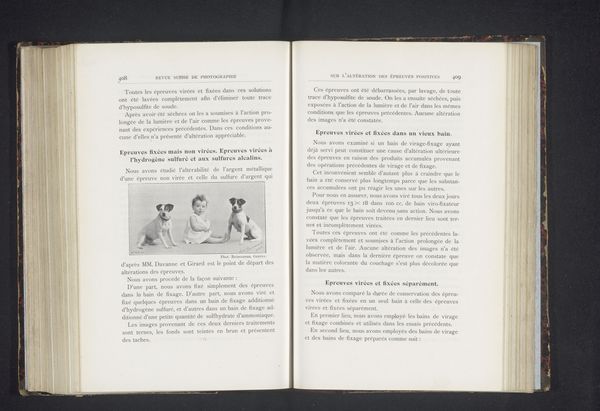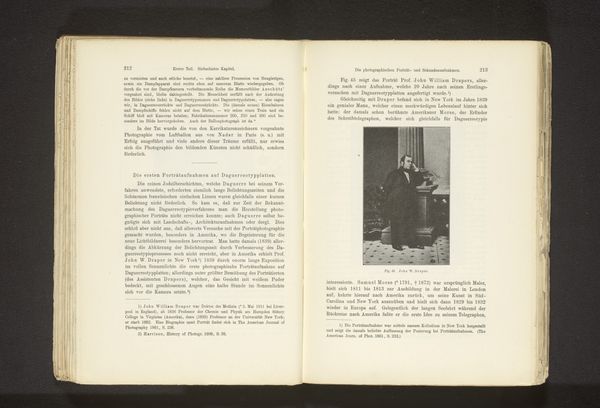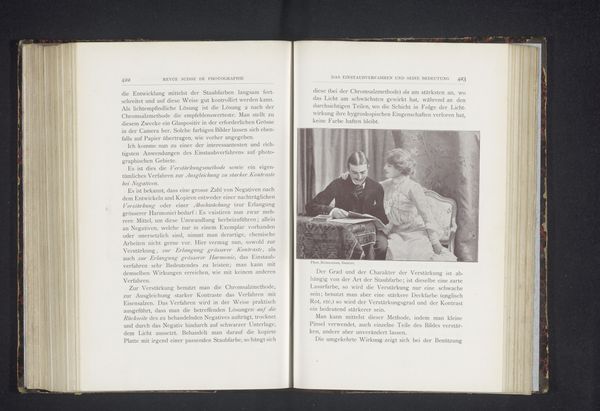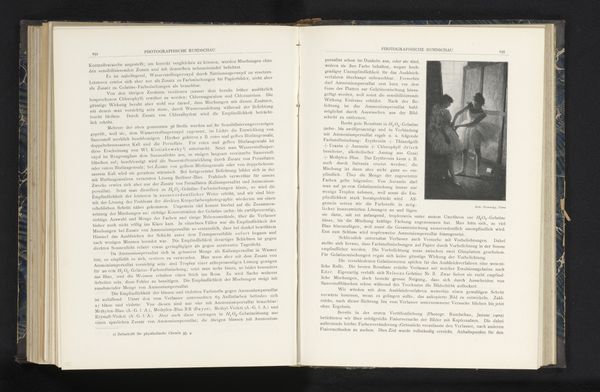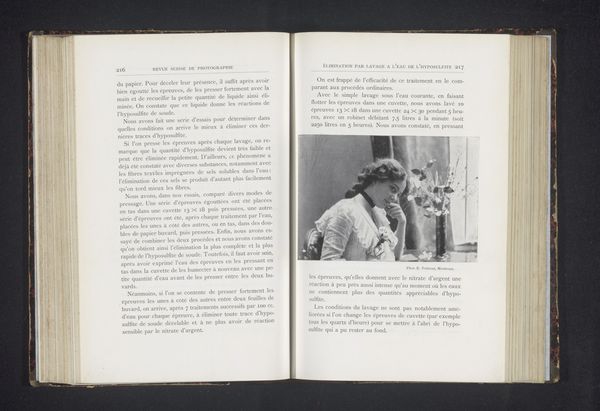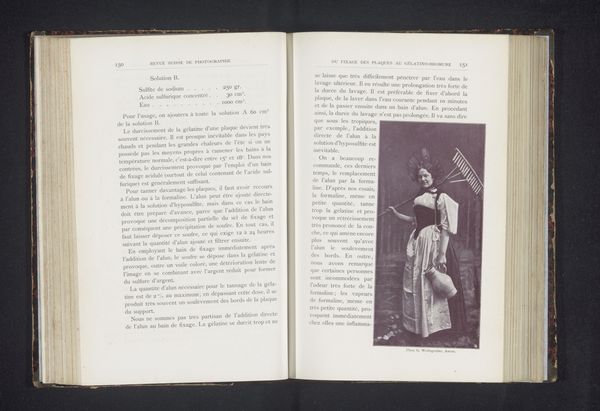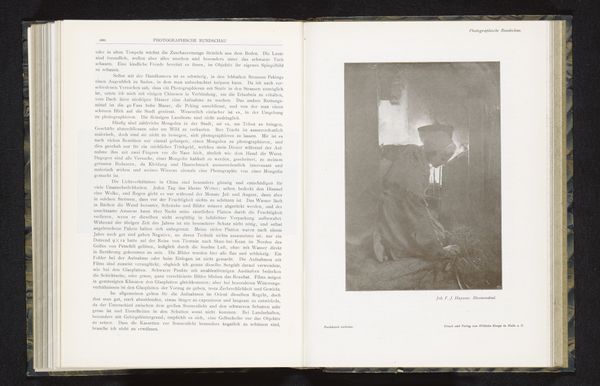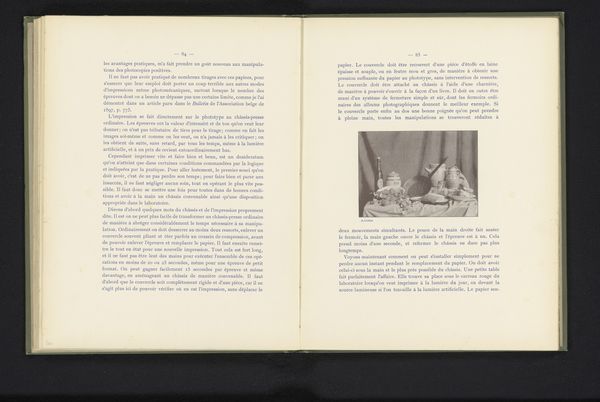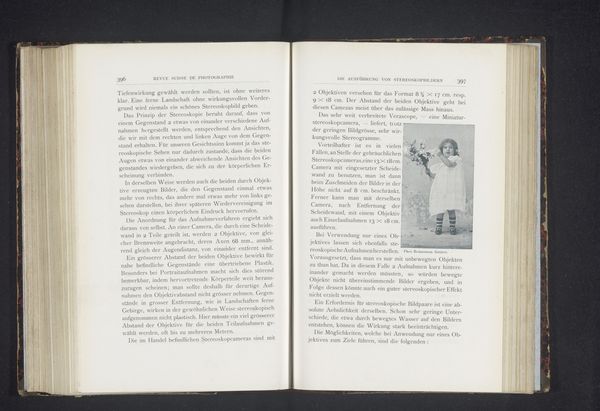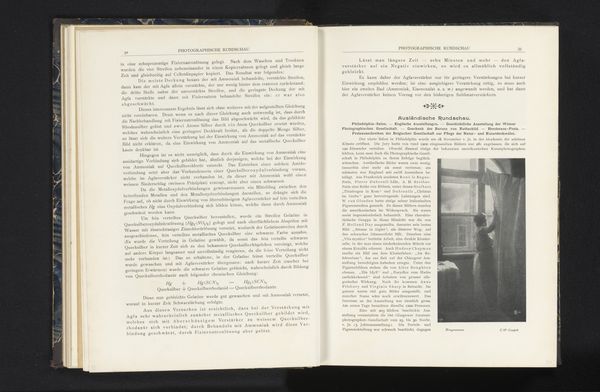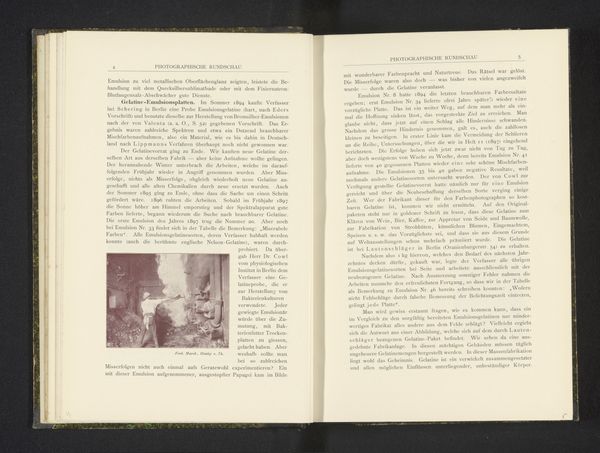
print, photography, gelatin-silver-print
#
portrait
#
aged paper
# print
#
photography
#
gelatin-silver-print
#
academic-art
#
paper medium
Dimensions: height 88 mm, width 120 mm
Copyright: Rijks Museum: Open Domain
Curator: Okay, let’s look at this image presented in a book – ‘Vissers op het meer’ attributed to Johannes Meiner, dated before 1902. The materials are listed as print, gelatin-silver print and photography, we need to unpack the story of its making, circulation, and its life as image and object. What strikes you initially? Editor: It's presented almost like an artifact. The way the aged book is open feels very deliberate, as though we're meant to consider it not just as a photograph, but also as a piece of historical documentation. How should we understand this type of printed matter in its time and now? Curator: Exactly! Let’s start with the process of photographic reproduction at the time. Gelatin-silver prints, were a relatively new medium. Think about the labor involved in creating this image, from preparing the chemicals to printing the final product. Editor: So, the photograph is functioning as a mode of mass production in some respect, but it is also being presented as something of a rarefied, fine-art object through its appearance in this book. What does that tell us? Curator: Think about how printed images circulated in this era. Was photography always conceived as a discrete fine art object displayed in a gallery or hung in a home? In fact it also served as popular imagery, incorporated in scientific, artistic, or ethnographic studies. It would eventually be circulated within educational and academic networks and the consumer market. We need to consider the photograph within this much broader ecosystem. Editor: I guess I hadn't considered the way the book changes the status of the image itself, by framing the labor, materiality and processes as intellectual projects Curator: Yes, and that helps us move away from thinking about the "art" solely in terms of composition, subject or intention, and think about this object’s status today. Editor: I learned that, even photography that feels distanced, actually involved so many steps and people in order to take its final form, like this one! Curator: Indeed! Now we can consider its journey to its new status as metadata in our contemporary collection catalogue!
Comments
No comments
Be the first to comment and join the conversation on the ultimate creative platform.
